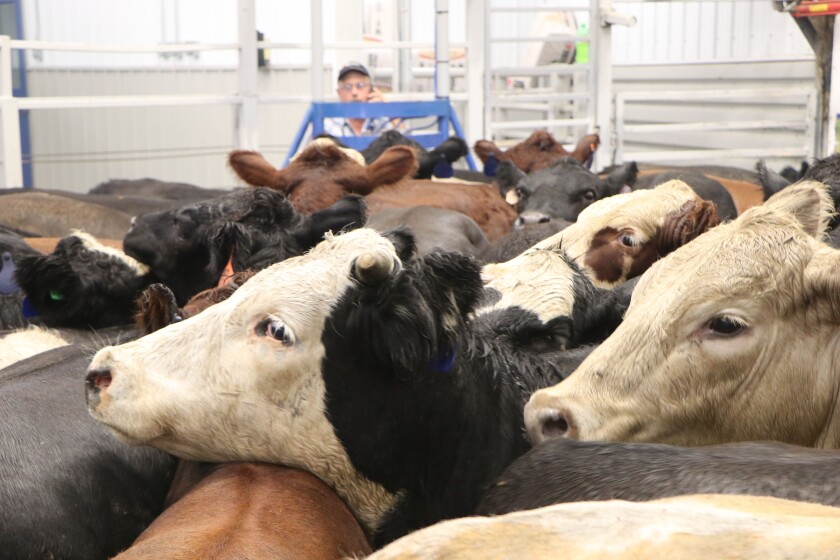Boost Your Experience with Bagley Risk Management
Boost Your Experience with Bagley Risk Management
Blog Article
Comprehending Animals Threat Defense (LRP) Insurance Coverage: A Comprehensive Guide
Browsing the realm of livestock danger defense (LRP) insurance policy can be a complex venture for numerous in the agricultural market. From how LRP insurance coverage functions to the numerous protection choices readily available, there is much to uncover in this extensive guide that could possibly form the means animals producers approach risk management in their businesses.

Exactly How LRP Insurance Coverage Works
Periodically, comprehending the auto mechanics of Livestock Danger Protection (LRP) insurance coverage can be intricate, but damaging down how it works can supply quality for farmers and ranchers. LRP insurance is a risk administration tool made to protect livestock producers against unexpected rate decreases. It's vital to keep in mind that LRP insurance is not a revenue guarantee; instead, it concentrates exclusively on rate threat security.
Eligibility and Coverage Options

When it comes to insurance coverage choices, LRP insurance provides producers the adaptability to choose the coverage degree, coverage duration, and recommendations that ideal suit their danger administration demands. Protection levels commonly range from 70% to 100% of the anticipated finishing worth of the insured animals. Manufacturers can likewise choose insurance coverage periods that line up with their manufacturing cycle, whether they are guaranteeing feeder cattle, fed livestock, swine, or lamb. Recommendations such as price danger protection can additionally personalize protection to shield versus damaging market fluctuations. By understanding the eligibility standards and coverage options available, animals producers can make informed decisions to take care of danger properly.
Pros and Disadvantages of LRP Insurance Coverage
When assessing Livestock Threat Protection (LRP) insurance, it is important for animals manufacturers to consider the downsides and advantages intrinsic in this risk monitoring device.

One of the key benefits of LRP insurance is its capability to supply protection against a decline in animals costs. Furthermore, LRP insurance policy offers a level of adaptability, permitting producers to tailor coverage levels and plan periods to match their details needs.
Nonetheless, there are also some downsides to think about. One restriction of LRP insurance policy is that it does not protect versus all sorts of dangers, such as illness break outs or all-natural catastrophes. Premiums can occasionally be pricey, specifically for producers with large livestock herds. It is crucial for producers to very carefully evaluate their private danger exposure and economic situation to figure out if LRP insurance coverage is the right danger monitoring tool for their procedure.
Comprehending LRP Insurance Coverage Premiums

Tips for Making The Most Of LRP Advantages
Making the most of the benefits of Animals Risk Security (LRP) insurance policy requires calculated preparation and proactive danger monitoring - Bagley Risk Management. To make the most of your LRP protection, consider the following suggestions:
Routinely Examine Market Problems: Keep informed about market trends and price changes in the livestock sector. By monitoring these elements, you can make informed decisions regarding when to buy LRP coverage to shield versus possible losses.
Establish Realistic Insurance Coverage Degrees: When picking insurance coverage degrees, consider your manufacturing prices, market worth of animals, and possible risks - Bagley Risk Management. Setting reasonable coverage degrees ensures that you are effectively secured without paying too much for unnecessary insurance coverage
Diversify find more information Your Coverage: As opposed to counting exclusively on LRP insurance, think about diversifying your threat administration strategies. Combining LRP with various other threat management tools such as futures agreements or choices can supply comprehensive coverage versus market uncertainties.
Review and Adjust Insurance Coverage Consistently: As market conditions alter, periodically assess your LRP protection to guarantee it lines up with your current threat exposure. Changing protection degrees and timing of purchases can assist maximize your danger protection strategy. By adhering to these pointers, you can make the most of the advantages of LRP insurance coverage and protect your livestock procedure versus unanticipated dangers.
Verdict
In final thought, animals threat security (LRP) insurance policy is an important device for farmers to take care of the financial dangers connected with their animals operations. By comprehending just how LRP works, qualification and protection alternatives, as well as the benefits and drawbacks of this insurance coverage, farmers can make enlightened choices to safeguard their livelihoods. By thoroughly taking into consideration LRP costs and executing approaches to optimize advantages, farmers can minimize prospective losses and make sure the sustainability of their procedures.
Animals producers interested in obtaining Animals Danger Protection (LRP) insurance coverage can discover an array of eligibility requirements and protection choices customized to their details animals procedures.When it comes to protection hop over to these guys alternatives, LRP visite site insurance provides producers the versatility to select the protection degree, protection duration, and endorsements that finest suit their threat management needs.To grasp the complexities of Livestock Danger Protection (LRP) insurance fully, comprehending the elements influencing LRP insurance premiums is critical. LRP insurance policy costs are identified by various elements, consisting of the protection level selected, the expected cost of livestock at the end of the protection duration, the kind of livestock being guaranteed, and the size of the coverage period.Evaluation and Change Protection On a regular basis: As market conditions change, occasionally examine your LRP coverage to guarantee it lines up with your existing danger direct exposure.
Report this page